668 results
Astronomy laboratories under $5
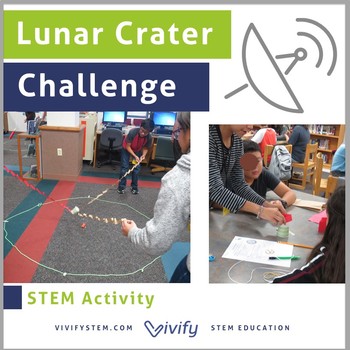
STEM Space Moon Crater Design Challenge (Engineering Design Process)
Can your team of astronauts work together to land a rover in the center of a crater on the Moon? This engaging STEM challenge is a fun way to incorporate the engineering design process into your classroom or afterschool program! Students use the engineering design process and explore the forces of motion to place a ball in a cup at the center of a 6 foot diameter circle without entering the circle. This challenge represents placing a NASA rover into the middle of the Apollo lunar crater for expl
Subjects:
Grades:
4th - 9th, Adult Education
Types:
NGSS:
3-5-ETS1-3
, 3-5-ETS1-1
, 3-5-ETS1-2
Also included in: Space STEM Starter Challenges MEGA Bundle: Middle School

Gravity & Mass Exploration- Activity: Finding WEIGHT & JUMP distances in space!
HOW DOES GRAVITY AFFECT YOU ON OTHER PLANETS?In this engaging activity, students explore how gravity would affect their weight and how far they could jump on other planets (and the Moon). Students first use their weight (or because weight can be a tricky topic the weight of an astronaut listed) to find out how gravity changes weight on other planets (and the Moon). They then find out how far they can jump on Earth by doing a STANDING BROAD JUMP. With this distance they will determine how far tha
Subjects:
Grades:
4th - 9th
Types:
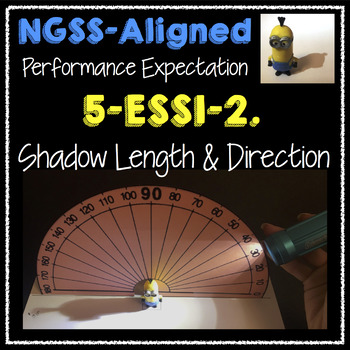
NGSS 5-ESS1-2 Shadow Length and Direction
This resource is for the 5th grade NGSS Performance Expectation: 5-ESS1-2 Represent data in graphical displays to reveal patterns of daily changes in length and direction of shadows. Save when you buy the bundle!These lessons are also part of a 5th Grade NGSS Space Bundle that cover 5-ESS1-1, 5-ESS1-2, and 5-PS2-1, found here . In this performance expectation, students will investigate the way that the Sun’s position affects the length and direction of shadows throughout the day. This lab allows
Subjects:
Grades:
5th
Types:
NGSS:
5-ESS1-2
Also included in: NGSS 5th Grade Space Bundle
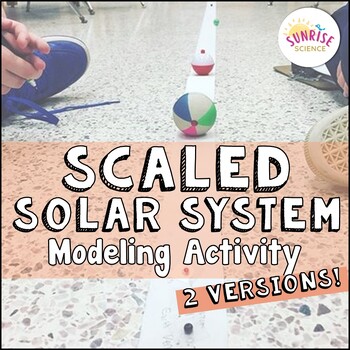
Scaled Solar System Activity: Relative Distances and Sizes of the Planets
For this Scaled Solar System activity, students will work in groups to create a scaled model of the solar system by measuring (and calculating in the case of the more challenging version of this activity) the specific distance to place each "planet" from the "sun". This will help your students understand the relative distances and sizes of the planets while satisfying the visual and kinesthetic learning styles of your middle school students! It also perfectly aligns to the NGSS Standard MS-ESS1-
Subjects:
Grades:
6th - 8th
Types:
NGSS:
MS-ESS1-3
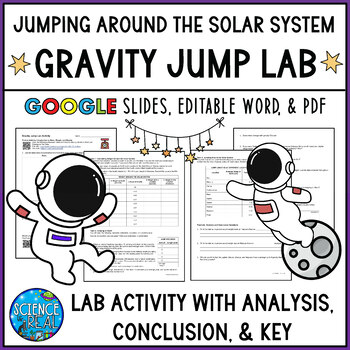
Gravity Lab - Weight, Mass, and Gravity Jump Lab Activity
⭐ ⭐ ⭐ ⭐ A classic fun lab activity made for secondary science students! Editable MS Word, PDF, and Google Slides versions included! Students learn mass, weight, and gravity and then calculate their weight and jump length at various locations in the solar system.⭐ This Lab is Broken Down Into 5 Different Tasks ⭐•Task 1- Pre-Lab: Students watch a short modern video about mass, weight, and gravity, and answer questions.•Task 2 - Weight On Other Planets: Student calculate their weight using the forc
Subjects:
Grades:
7th - 11th
Types:
NGSS:
HS-ESS1-4
, MS-ESS1-2
Also included in: Introduction Astronomy, Gravity, and Kepler's Laws GROWING BUNDLE

Graphing Ocean Tides Activity NGSS MS-ESS1-2 MS-ESS1-1
Students graph monthly and daily tides from a tide chart and make connections to the moon phases associated with spring and neap tides. This challenging activity helps them to gain a deeper understanding of the relationship between the moon and tides. ⭐ Get this activity at a huge discount in our Moon & Tides Activity Bundle! Lesson Outline: PRACTICE using a tide chart. This familiarizes kids with reading and working with a tide chart. GRAPH the tide chart data for one month. We find it
Subjects:
Grades:
7th - 10th
Types:
NGSS:
HS-ESS1-4
, MS-ESS1-2
, MS-ESS1-1
Also included in: Moon Phases and Ocean Tides Activity BUNDLE NGSS MS-ESS1-1
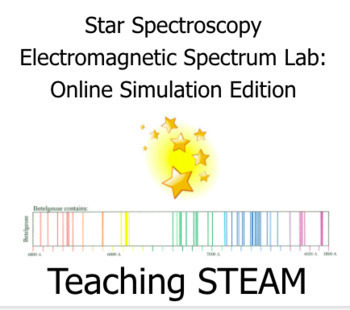
Star Spectroscopy/Electromagnetic Spectrum Lab: Online Simulation Edition
Spectroscopy is how we know what elements are in stars. This lab is awesome connecting students to how star science works. It also makes spectroscopy real in chemistry class, physics, astronomy, and general science about the electromagnetic spectrum. My students loved this activity solo and over Zoom. They felt that they learned how we use spectroscopy and have a deeper understanding of the electromagnetic spectrum. This activity is an online simulation version of Star Spectroscopy/Electromagnet
Subjects:
Grades:
9th - 12th
Types:
NGSS:
HS-ESS1-3
, HS-ESS1-1
, HS-ESS1-2
, HS-PS4-1
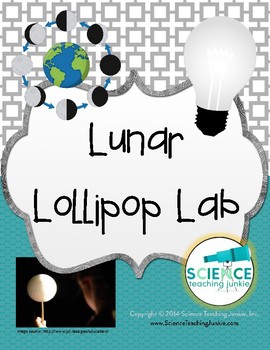
Lunar Lollipop Lab: Discovering Moon Phases
The Lunar Lollipop Lab is a great introductory lab for teaching moon phases because it allows students to visually observe the changing phases of the moon as a result of the relative positions of the Sun, Earth and moon. Don't just teach it...let your students EXPERIENCE it. By the end of the lab, students should understand why/how we have moon phases and should be able to predict the next phase in a sequence.
Each student will hold a moon pop in their hand. The lamp in the center of the roo
Subjects:
Grades:
5th - 10th
Types:
Also included in: Bundle #2 for Kimberly G.

Tides Lab Using Water Balloons - Hands On Experience That Kids LOVE!
This lab is a really fun way to use discovery and investigation to teach students how gravity and inertia cause tides, along with the moon. The cost is low (a package of water balloons and yarn) and it is a great activity to get kids moving and outside. They work in small groups and go through a series of steps and procedures and record data. This was one of the most fun labs of the year for students and was instrumental is having kids understand why we have high tides on the side of the Earth c
Subjects:
Grades:
6th - 12th
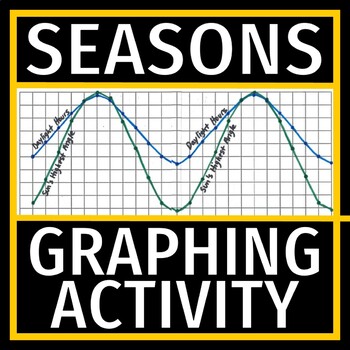
EARTH'S TILT Reason for the SEASONS ACTIVITY Graph Sun Angle and Length of Day
Inquiry-based activity! Provide middle school students a deeper understanding of Earth's seasons through the analysis of a student-generated graph. Clear worksheet instructions, easy-to-graph data, and a nice analysis section combine to make a really worthwhile activity!Objective: Graph the relationship between the seasons and angle of sunlight, as well as the seasons and length of daylight hours. ⭐Get this resource at a discount in our Seasons ACTIVITY BUNDLE!In this activity, students will
Subjects:
Grades:
7th - 10th
Types:
NGSS:
HS-ESS1-4
, MS-ESS2-6
, MS-ESS1-1
Also included in: Earth's Tilt and Reason for the Seasons Activity BUNDLE NGSS MS-ESS1-1
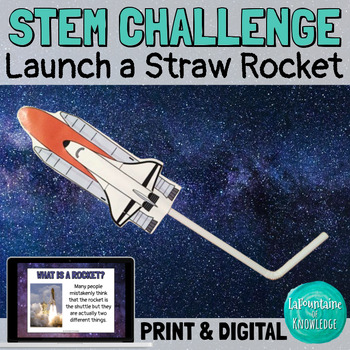
Space STEM Challenge Launch a Paper Straw Rocket Lab PRINT and DIGITAL
For this STEM Challenge, students must build a paper space rocket and launch it at least three feet into the air using a drinking straw. This activity explains the difference between a rocket and a shuttle and describes how rockets work in simple terms. It's the perfect experiment to include in an outer space or moon themed unit in your science classroom. This resource includes: teacher directions, discussion questions, and extension activitiesbackground information about what rockets are and ho
Subjects:
Grades:
3rd - 6th
Types:
NGSS:
3-5-ETS1-3
, 3-5-ETS1-1
, 3-5-ETS1-2
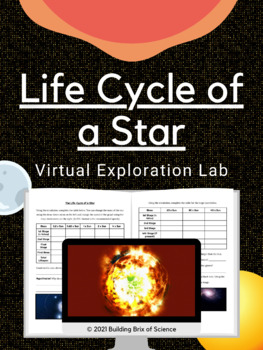
Life Cycle of a Star Virtual Exploration Lab
What are the stages of a star's life? In this virtual lab, students will use mathematical data to analyze the life cycles of different stars based on their initial mass. Students will also:⚗️Test their Pre-Existing Knowledge of Stars⚗️Analyze the Fusion of Hydrogen Atoms into Helium⚗️Explain the Correlation between a Star's Mass and its' Age⚗️Investigate the Formation of Neutron Stars & Black HolesNOTE: This activity links to the Star in the Box Simulation from Las Cumbres University. Check
Subjects:
Grades:
6th - 12th
Types:
NGSS:
HS-ESS1-3
, HS-ESS1-1
Also included in: Virtual Science Labs Full Exploration Activity Bundle
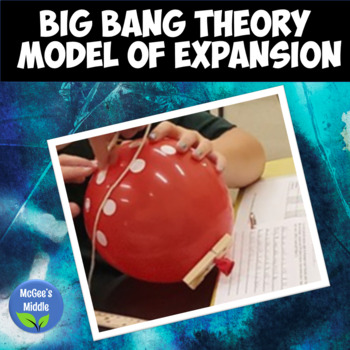
The Big Bang Theory - Expanding Universe Balloon Model Activity (NGSS)
Modeling of the Universe Expanding Activity (Big Bang)Designed for middle school Earth science. This is more of an introductory activity to support additional instruction on the Big Bang Theory. This activity helps students model the expansion of the universe using a balloon. Students record and graph data. Includes:Teacher InstructionsStudent InstructionsLab with data chart (two versions) Graphing PageModel of Graphing PageThis activity was successfully done with Dollar Tree purchases (balloo
Subjects:
Grades:
6th - 8th
Types:
NGSS:
HS-ESS1-1
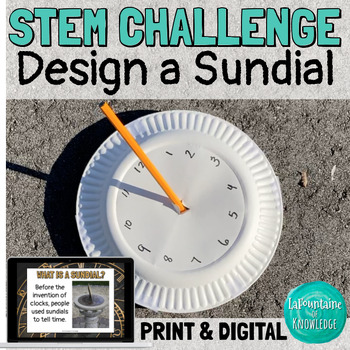
STEM Challenge Design a Sundial Science Lab Experiment PRINT and DIGITAL
For this STEM challenge activity, students must design and test a working sundial. It's the perfect opportunity to incorporate hands on exploration while learning about the sun, night and day, shadows, solar power, etc. This resource includes: teacher directions, suggestions, discussion questions, and extensions a force copy link to a digital Google Slides version3 slides of background information about sundials5 slides setting up the challenge with student directionsa student response worksheet
Subjects:
Grades:
3rd - 6th
Types:
NGSS:
5-ESS1-2
, 3-5-ETS1-3
, 3-5-ETS1-1
, 3-5-ETS1-2
, MS-ESS1-1
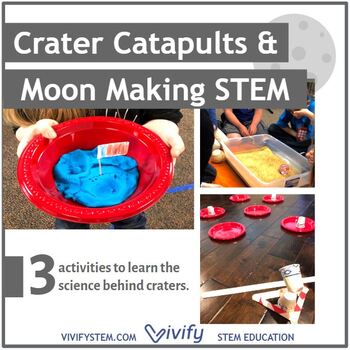
Crater Catapults and Moon Science STEM
Launch into a deep study of space rocks, the lunar surface, and craters that is sure to leave a lasting impact! In this comprehensive lesson, students use what they learn about meteors and craters to build a catapult that launches “research equipment” into craters. Worksheets are included to guide students through the engineering design process. Then, students create their own satellite with craters like our own Moon. Explanations of the types of craters, crater parts, most famous Earth craters,
Subjects:
Grades:
K - 8th
Types:
Also included in: Space STEM Starter Challenges MEGA Bundle: Elementary Grades
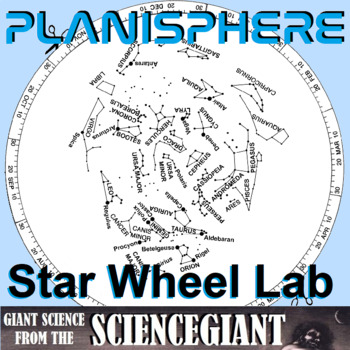
Planisphere Lab Activity: A Star Wheel for Constellation Exploration
Inexpensive and ingenious! Planispheres are a unique tool for learning astronomy: a make-it-yourself star map, adjustable for any time of night in any month of the year. They are designed to show the position of prominent constellations in the night sky. It's a low-tech way for Ss to learn the location (and thus give meaning to key vocabulary terms) of the horizon, zenith, meridian, ecliptic and celestial equator on the celestial sphere. This lab includes two types of planispheres: one for stan
Subjects:
Grades:
6th - 12th, Higher Education
Types:
NGSS:
HS-ESS1-4
, 5-ESS1-2
, MS-ESS1-1
Also included in: StayGiant Earth Science Bundle: Astronomy (space exploration)

The Doppler Effect - Evidence for the Big Bang Theory | Digital Lab Activity
In this Google Slides™ digital lab activity, the students will learn how the Doppler effect is used to measure the movement of galaxies and stars in space and why the redshift in the light from distant galaxies is one of the pieces of evidence for the Big Bang Theory. The students will analyze light spectra from galaxies and stars. They will notice a pattern in the relationship between the position of the absorption lines with respect to the red end of the electromagnetic spectrum and the distan
Subjects:
Grades:
8th - 11th
Types:
CCSS:
NGSS:
HS-ESS1-2

Star Nuclear Fusion Lab
In this lesson, students will build models that show how stars fuse hydrogen in the core and release energy. There are 2 versions included:1. MIDDLE SCHOOL VERSION: In this version, students will model the fusion of protons only. They will use white mini-marshmallows to show the fusion of hydrogen all the way up to iron (where fusion stops). 2. HIGH SCHOOL VERSION: In this version, students will model the fusion of protons and neutrons. They will use white mini-marshmallows as protons, colored m
Subjects:
Grades:
9th - 11th
Types:
NGSS:
HS-ESS1-3
Also included in: Stars Bundle
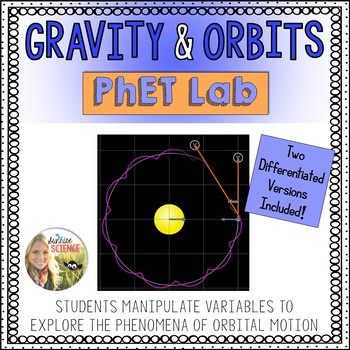
Gravity and Orbits PhET Lab
This virtual PhET Gravity and Orbits simulation lab provides students opportunity to experiment with the variables that affect the force of gravity between two objects and the concept of orbital motion. This inquiry activity can be used in a physical science class while students are exploring motion and gravity. This could also be incorporated during an astronomy unit or even as an inquiry into the concept of gravity alone. There are two differentiated versions of this activity:The green circle
Subjects:
Grades:
7th - 9th
NGSS:
MS-ESS1-2
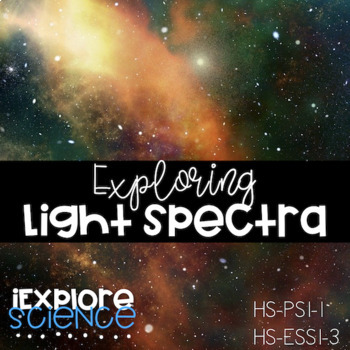
Exploring Light Spectra - Spectroscope Lab (HS-ESS1-3, HS-PS1-1)
Launch a storyline into stars, the universe, and matter and energy in space by investigating the sun's spectrum and exploring what we can learn about our star by understanding it. This bundle includes three activities to guide students through an abbreviated 5E sequence (the engage, explore, and explain phases).Phenomenon: Fraunhofer Lines Engage Students will observe the sun's spectrum and ask questions about the dark lines that can be observed. Exploring Light With Spectroscopes* Explore Stu
Subjects:
Grades:
9th - 12th
Types:
NGSS:
HS-PS1-1
, HS-ESS1-3
, HS-ESS1-1
Also included in: Evidence For The Big Bang Theory BUNDLE - HS-ESS1-2
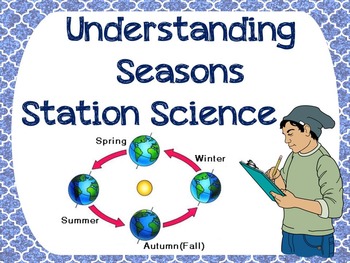
Understanding Seasons Station Science Lab Activities (5) with Simple materials
Looking for easy stations to set up to help your students understand te reason for the seasons- this is it!
This hands on lesson includes five stations to encourage understanding of the position of Earth in each season using simple materials. Analyzing/ thinking questions are included to guide students in the right direction!
Rubric included as well as answer keys and materials and set up instructions.
CHECK OUT the preview!!!
Now part of a HUGE bundle at a great savings!
The Reasons for the
Subjects:
Grades:
5th - 8th
Types:
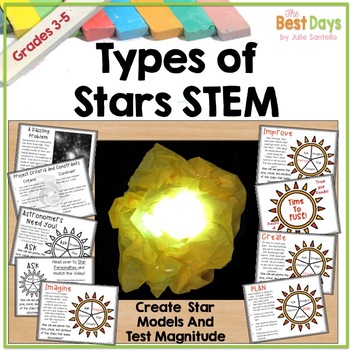
Stars STEM: Types of Stars
This STEM project explores how STARS can appear different in the night sky based on how far they are from the Earth! You provide materials for students to design and try their own stars in a 1/2 hour time limit. This STEM's goal is to explore properties of stars, their brilliance, and how this is affected by their distance from the Earth. All the materials you need for documenting student progress are found inside! Look What's Inside the Types of Stars STEM! For the Teacher• Notes for the Tea
Grades:
3rd - 6th
Types:
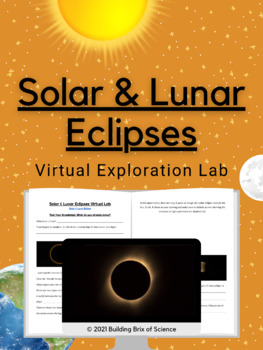
Solar & Lunar Eclipses Virtual Exploration Lab
What is the difference between a Solar and Lunar eclipse? In this virtual lab, students will manipulate the Earth & Moon to determine what causes an eclipse. Students will also:⚗️Test their Pre-Existing Knowledge of an Eclipse⚗️Identify the Lunar Phases that occur during Eclipses⚗️Draw Diagrams of a Solar & Lunar Eclipse⚗️Compare & Contrast Partial and Total EclipsesNOTE: This activity links to the free Interactive from Earth Space Lab. Check it out below!Solar & Lunar EclipsesPu
Subjects:
Grades:
6th - 12th
Types:
NGSS:
MS-ESS1-1
Also included in: Virtual Science Labs Full Exploration Activity Bundle
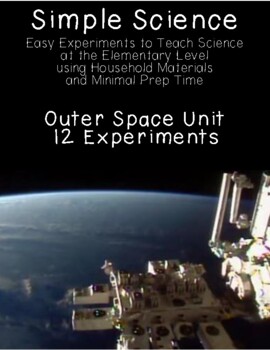
Outer Space Science Experiments Pack
These simple experiments have been complied to teach basic science concepts to even the youngest of learners. Each experiment is written to guide teachers through the process quickly and easily.A list of required household materials, a step-by-step explanation of how to conduct each experiment in your classroom, and a description of the important science principles behind the experiment are all included.The student recording sheet can be used for each experiment. This sheet will help guide stude
Subjects:
Grades:
2nd - 5th
Types:
Also included in: Science Experiments Big Bundle: 180 Experiments
Showing 1-24 of 668 results





